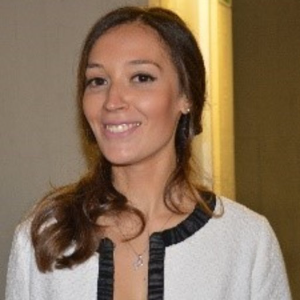Title : Co-exposure and effects of nanomaterials and organic pollutants on the reproductive toxicity of mammal gametes and freshwater organisms
Abstract:
Cerium dioxide nanoparticles (CeO2ENMs) are widely used as diesel additive and are released in the air after combustion in a diesel engine. During combustion, the physico-chemical properties drastically change, highlighting the need of a better understanding on their potential toxicity at each stage of their life cycle. Considering rising rates of male and female reproductive hazards in human and wildlife in the last decades, our study aims to better understand the potential effect of exposure to a cocktail of air pollutants on reproductive cells in mammals and aquatic organisms. It represents the first approach considering exposure conditions really close to those expected in human being. We studied the potential reproductive toxicity of combusted CeO2 ENMs towards germ cells as well as the CeO2 ENMs cell interaction. Herein, human and rat sperm cells were exposed in vitro to a CeO2 ENM-based diesel additive (called EnviroxTM), burned at 850 °C to mimic its release after combustion in a diesel engine. We demonstrated significantly higher amounts of DNA damage after exposure to the lowest concentration tested of combusted CeO2ENMs (1 μg·L−1) using the Alkaline Comet Assay (ACA) and a significant increase of oxidative stress in human sper. 2D and 3D image analysis did not show any internalization of combusted CeO2ENMs in human sperm but an affinity for the head plasma membrane.
Our study also considered the potential interaction and toxicity of NMs with other pollutants spread by diesel exhaust in the air; benzo(a)pyrene (BaP) is a recognized reprotoxic compound and the most widely investigated polycyclic aromatic hydrocarbon in ambient air; it is widespread by the incomplete combustion of fossil fuels. We showed a significant increase of DNA damage after in vitro exposure to combusted CeO2 ENMs (1 μg·L−1) or BaP (1.13 μmol·L-1) in human sperm and rat germ cells (sperm, oocytes and cumulus cells) compared to unexposed cells using the ACA. Co-exposure to the CeO2 ENMs-BaP mixture induced additive DNA damage in sperm and cumulus cells; no additive effect was observed in rat oocytes.
We considered the potential impact of the release of ENMs in the environment and their interactions with reproductive cells of freshwater snails exposed in aquatic mesocosms. We used 60 L indoor mesocosm ecosystem mimicking a pond ecosystem to study the effects of a chronic exposure of Pcorneus to a cocktail of NMs including 1.1 mg·L-1 of combusted CeO2 ENMs and 1.1 mg·L-1 of TiO2 ENMs over 28 days. We quantified Ce and Ti in the surficial sediments and adults Pcorneus that graze on these sediments to feed. Ce was also found in Pcorneus layings in the matrix surrounding the fertilized eggs by Laser Ablation ICP-MS.
In rat oocytes, the absence of an additive genotoxicity can be due to the presence of different layers of cumulus cells which protect the cell and to the oocyte’s efficient system to repair DNA damages. This protective structure has been also observed in P. corneus layings which seems to capture aggregates of ENMs in the external matrix, protecting the internal fertilized eggs contained in an egg capsule. In vivo studies are required.
Audience take-away:
- Raising awareness among the non-specialist public about the potential harmful effects of exposure to nanoparticles.
- Deeper Knowledge on idiopathic infertility.
- Deeper knowledge about DNA damage induced by ENMs exposure on reproductive health.



